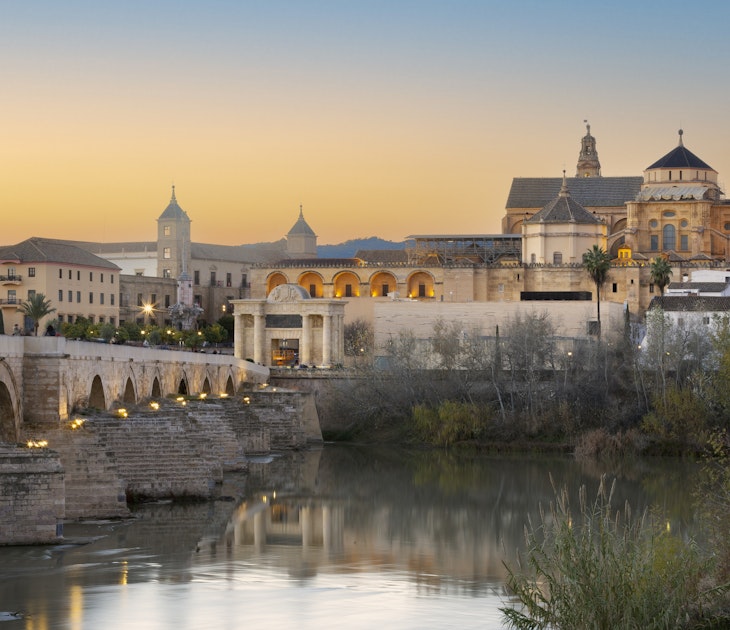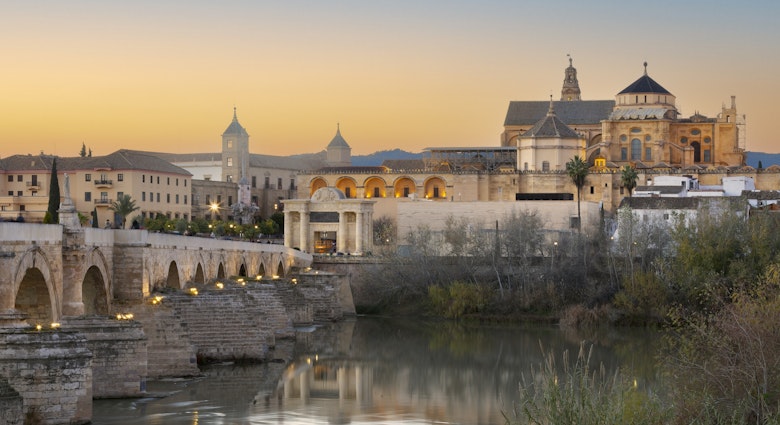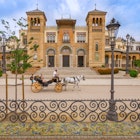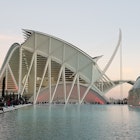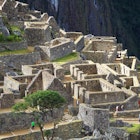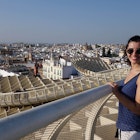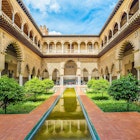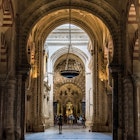These recommendations are taken from our Andalucia guidebook, which is full of inspirational ideas & detailed coverage for foodies, walkers & culture lovers.
1. Alhambra — Imagine yourself in Islamic-era splendour
The sheer red walls of the Alhambra rise from woods of cypress and elm. Inside is one of the more splendid sights of Europe, a network of lavishly decorated palaces and irrigated gardens. The Alhambra takes its name from the Arabic al-qala’a al-hamra (the Red Castle). The first palace on the site was built by Samuel Ha-Nagid, the Jewish grand vizier of one of Granada’s 11th-century Zirid sultans. After the Christian reconquest, the Alhambra’s mosque was replaced with a church. What you see today has been heavily but respectfully restored.

Image by David Tomlinson
2. Seville's Cathedral & Giralda —The home of God: built by the hands of lunatics
Seville’s immense cathedral, officially the biggest in the world, is awe-inspiring in its scale and sheer majesty. It stands on the site of the great 12th-century Almohad mosque, with the mosque’s minaret (the Giralda) still towering beside it. After Seville fell to the Christians in 1248 the mosque was used as a church until 1401. Then, in view of its decaying state, the church authorities decided to knock it down and start again. ‘Let us create such a building that future generations will take us for lunatics’, they decided (or so legend has it). The result is a cathedral measuring 126m long and 83m wide.

Image by Karl Blackwell
3. Córdoba’s Mezquita — Discover Andalucía’s most spectacular structure
It’s impossible to overestimate the beauty of Córdoba’s Mezquita. The Mezquita’s architectural uniqueness and importance lies in the fact that, structurally speaking, it was a revolutionary building for its time. It defied precedents. The Dome of the Rock in Jerusalem and the Great Mosque in Damascus both had vertical, navelike designs, but the Mezquita’s aim was to form an infinitely spacious, democratically horizontal and simple space, where the spirit could be free to roam and communicate easily with God. The original Islamic prayer space (usually the open yard of a desert home) was transformed into a 14,400-sq-m metaphor for the desert itself.

Image by Karl Blackwell
4. Seville's Alcázar — Islamic Africa’s gift to Spain
The sublime and romantic Alcázar, a World Heritage–listed monument, is the building every other building in Seville wants to be. Originally founded as a fort for the Cordoban governors of Seville in 913, the Alcázar has been expanded or reconstructed many times in its 11 centuries of existence. In the 11th century Seville’s prosperous Muslim taifa (small kingdom) rulers developed the original fort by building a palace called Al-Muwarak (the Blessed) in what’s now the western part of the Alcázar.

Image by Bethune Carmichael
5. Úbeda’s Plaza Vázquez de Molina — See the legacy of Úbeda’s aristocracy
Following the success of the Reconquista, Úbeda’s aristocratic lions lost no time jockeying for power in the Castilian court. Exposed to the cultural influences of the Italian Renaissance that were then seeping into Spain, and benefiting from the wealth and privilege of high office, the Molina family turned their attention to self-aggrandising civic projects in its home town. They commissioned what are now considered to be some of the purest examples of Renaissance architecture in Spain. The purity of Renaissance lines is best expressed in the Capilla del Salvador del Mundo.

Image by Karl Blackwell
6. White villages of Las Alpujarras — The quintessential pueblos blancos for which Andalucía is famous
One of the most picturesque corners of Andalucía, Las Alpujarras is a 70km-long jumble of valleys along the south flank of the Sierra Nevada. Arid hillsides split by deep ravines alternate with oasis-like white villages surrounded by vegetable gardens, orchards, rapid streams and woodlands. Ancient paths wind up and down through constantly changing scenery between labyrinthine, Berber-style villages.

Image by David Tomlinson
More cultural highlights can be found in the Lonely Planet guide to Andalucia
This article was originally published July 2010. Format was updated March 2013.
